Focus Interview | Digital Empowerment of Living Water
The Pishihang Irrigation Area, the largest irrigation area in China built after the founding of the People's Republic of China, has been under construction for 65 years since August 19th this year. Over the past few decades, millions of acres of farmland in the Jianghuai River Basin have been irrigated with water from this irrigation area. While making significant contributions, there are also increasing issues such as aging facilities and insufficient timely and accurate water regulation due to the passage of time. More than two years ago, digital transformation began here. What new changes can this bring to the old irrigation area?
In August, Yang Qingguo, a major grain grower, entered a critical growth period for over 300 acres of rice. A few days ago, there was continuous high temperature and some water shortage in the rice fields. Lao Yang plans to quickly apply for a new round of water use.
Planting rice, water is the "lifeline", and there are several key stages in the growth process of rice that require irrigation and water replenishment. After Lao Yang applied to the village, the village would calculate the needs of others, report to the town together, and then sign a transfer order with the water management department.
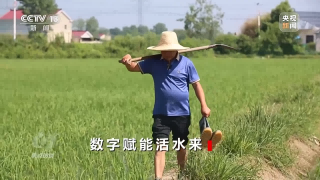
After submitting the application, will the approval process be slow? Lao Yang is not worried at all. Since the digital transformation in the past two years, he has had a deep understanding in his heart. But when it comes to the troubles before the renovation, Old Yang has a lot to say.
Mianchang Village is located downstream of the Jinbei Branch Canal in the Pishihang Irrigation District, and the village's farmland irrigation relies on this canal. Before the canal was built to their doorstep, villagers could only grow dryland crops such as cotton, which is the name of Cotton Farm Village. At that time, planting rice that consumed a lot of water was unimaginable.
In order to solve the problem of irrigation and other water use, construction began in 1958 in the Pishihang Irrigation Area, which spans the two major river basins of the Yangtze and Huaihe Rivers. With 25000 kilometers of channels, it connects six large reservoirs, more than 1200 small and medium-sized reservoirs, and 210000 ponds and dams, forming a "vine melons" style irrigation and drainage system.
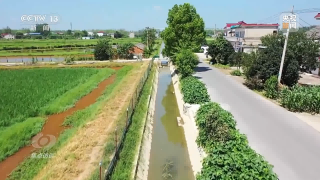
With water, most people in Cotton Farm Village have planted rice with higher yields. But as the channels age, new problems arise again, and upstream and downstream farmers often engage in conflicts in order to grab water.
The upstream and downstream water rush is due to the aging of the original soil channels, severe water leakage, and the tendency to break the embankment when releasing water. As a result, the amount of water reaching the field is far less than the approved amount. At the same time, the lack of scientific scheduling and timely and efficient water distribution within the irrigation area also leaves farmers feeling uncertain.
The reporter learned that in the past, after receiving water use applications, the water management department had to rely on manual measurement and other methods to form data. After reporting layer by layer, the Pishihang Irrigation District Management Bureau formulated a unified scheduling plan and then distributed water as needed.
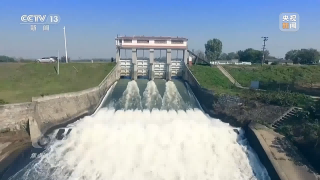
Zou Jun, Director of the Qijiaqiao Branch of the Pi River Main Canal in Pishihang Irrigation District: When automatic water measuring equipment was not installed before, we needed frontline workers to come to the site every day to measure the flow, take a ruler for manual measurement, and then calculate manually. This is time-consuming, and secondly, coming to the site regardless of wind or rain is not very timely and accurate.
In 2021, Pishihang Irrigation District launched digital transformation. On the one hand, the water channel was hardened and rebuilt to avoid water loss during transportation. At the same time, various intelligent monitoring devices were installed, eliminating the need for manual on-site measurement.
Zou Jun, Director of the Qijiaqiao Branch of the Pi River Main Canal in Pishihang Irrigation District: Now, the data of each irrigation area and each culvert is all reflected in real-time on the information terminal of the bureau. It can scientifically analyze the entire area, which place needs how much water, or which place has already supplied how much water, and quickly analyze the relevant water supply plan. So this process becomes very fast and the data becomes more accurate.
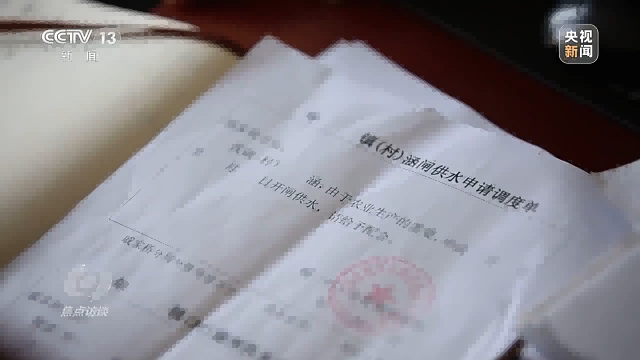
It is precisely this transformation that has given Lao Yang and other farmers peace of mind. On this day, five hours after submitting the water application, the water had already arrived at Cotton Farm Village in the afternoon. Previously, they often had to wait for two or three days, or even longer.
The water problem has been solved, and no one is thinking about grabbing water anymore. Lao Yang and Lao Chen naturally shook hands and made peace. Now, the two old masters of farming have gained more confidence in farming.
Nowadays, out of 10.6 million acres of farmland in the Pishihang Irrigation District, over 9.8 million acres are planted with rice, with an annual grain production of over 14 billion kilograms. Digital transformation is also extending from channels to more remote fields.
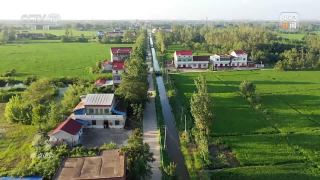
In an agricultural base in Linzhai Village, Jiang Hao is using the field water conservancy information system on his phone to open gates and drain more than 1000 acres of fish and rice fields. A few days ago, due to the impact of a typhoon, the local area experienced heavy rainfall and some water accumulated in the fields.
There are a total of 5 smart gates in this over 1000 acre fish and rice field. If you want to open them all, one person can easily operate them with a mobile phone in less than a minute. In the past, when using old gates, manual operation may take more than three hours. Effort aside, inadequate and inaccurate drainage can potentially affect the harvest.
Jiang Hao started planting fish and rice in 2019, growing rice above water and raising fish underwater. The irrigation water source for the fish and rice fields comes from the Qingliangsi Branch Canal in the Pishihang Irrigation District and two small reservoirs in the surrounding area. Although the water source is guaranteed, the accuracy of water usage has always been a challenge. Excessive water release affects the growth of rice, while insufficient water and lack of oxygen can also affect fish. At the beginning, the yield of fish and rice fields was 20% lower than now. Since the digital transformation and installation of water level sensors, integrated automatic gates and other facilities, water supply and drainage can be remotely and accurately controlled, and Jiang Hao no longer has to worry as much as before.
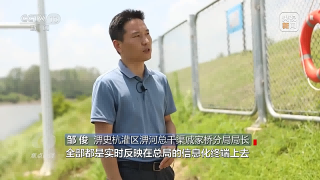
There are also many new devices installed in the fish and rice fields, such as automatic irrigation pump stations, rainfall monitors, soil moisture monitors, etc., and relevant data can be viewed at any time on mobile phones.
After digital transformation, last year, Jiang Hao's fish and rice fields saved nearly 20% of water compared to previous years. Despite severe drought in the local area last year, his fish and rice fields not only did not experience a decrease in production, but also increased production.
At present, in Jiangjiadian Town, where Linzhai Village is located, a total of 18000 acres of farmland are being piloted for field water conservancy information management.
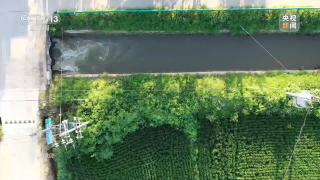
Tu Dongsheng, Director of the Planning and Planning Department of the Pishihang Irrigation District Management Bureau: In this area, information on water, rain, agriculture, and engineering can be automatically collected. We can automatically control drinking water, water delivery, water distribution, water withdrawal, and metering. We will explore in this pilot program, summarize our experience, find a model that can be replicated and promoted, and then apply it in irrigation areas and other places for further promotion.
At present, more than 3800 intelligent sensors have been installed in the entire Pishihang Irrigation District, from the main canal to the fields. Various types of data such as water, rain, soil moisture, and automatic control of water gates have formed a huge digital network, which is continuously transmitted to the "brain" of the irrigation district - the Pishihang Irrigation District Management Bureau Dispatch Center. Here, various types of data will be recorded, analyzed, and rehearsed in real-time by the system, providing reference for management departments to make decisions.
Wang Dongxia, Deputy Director of the Irrigation Dispatch Department of the Pishihang Irrigation District Management Bureau: In the past, we may have only roughly grasped the situation of the entire irrigation area, and could not accurately calculate the amount of water used for various types, the amount of rice planted, and the area. With the construction of digital irrigation areas now, we can clearly and clearly analyze the water demand and situation of the entire irrigation area at a glance. This will help us in the next step of more accurate, efficient, and timely allocation and scheduling of water resources in irrigation areas.
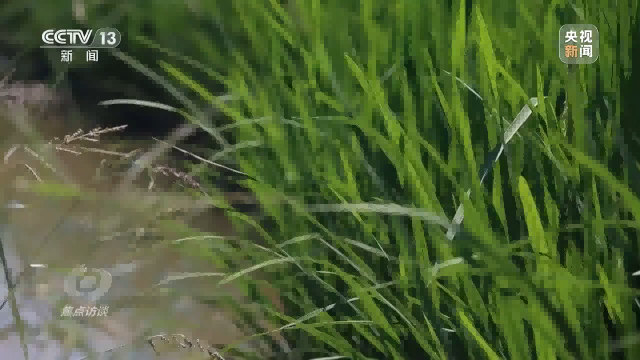
The construction of digital irrigation areas is still in progress, and these days, technicians are using surveying drones to capture images along the main canal of the Pi River.
The purpose of this work is to build an intelligent digital twin system for the canal head. That is to say, through digital technology, a three-dimensional model can be built in a computer system that is the same as the real scene of the canal head. Combined with real-time transmitted data such as water and rain conditions, digital simulation and deduction can be carried out.
Wang Rong, Development Engineer of Pishihang Digital Irrigation Area: We can use this three-dimensional scene to simulate where the water level will flood during channel flood control, and when it is necessary to adjust the process flow rate of the water level. This is more helpful for our flood control decision-making, including how to allocate water resources. The same principle applies.

The Hongshizui Canal Head Hub located in Jinzhai County has already tasted its freshness in advance. By June, the digital twin system there had already been completed and put into use. It is precisely thanks to this intelligent system that Jinzhai urban area avoided potential waterlogging caused by heavy rainfall during the typhoon this year. Next, Pishihang Irrigation District will continue to expand the scope of digital transformation and build a more dense and refined intelligent network.
In the future, after the completion of digital irrigation areas, the manual recording of data archives in Pishihang Irrigation Area will become a thing of the past few decades. In 2022, the Ministry of Water Resources selected 48 large and medium-sized irrigation areas nationwide to carry out pilot work in digital twin irrigation areas, involving an irrigation area of over 60 million acres. This transformation will overall enhance the modernization construction and management level of irrigation areas, enhance the defense ability against water and drought disasters, and better achieve precise irrigation to ensure food security.
Editor | Tu Zhijuan Ren Gui

Camera | Zhang Hui and Zhang Yu
Editing | Zhao Peng




